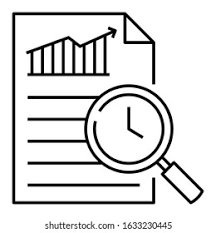The Significance of Historical Data in Understanding the Past
Historical data serves as a crucial foundation for understanding the past and shaping the future. It provides valuable insights into events, trends, and behaviors that have shaped societies and civilizations over time.
By studying historical data, researchers, historians, and scholars can uncover patterns, make connections, and draw conclusions about human experiences throughout different eras. Whether it’s analyzing economic trends, political movements, cultural shifts, or technological advancements, historical data offers a window into the complexities of our shared history.
One of the key benefits of historical data is its ability to provide context. By examining primary sources, documents, artifacts, and records from the past, we can gain a deeper understanding of the circumstances surrounding significant events. This context allows us to interpret history more accurately and appreciate the complexities that have shaped our world.
Furthermore, historical data helps us learn from past mistakes and successes. By studying how societies have responded to challenges in the past, we can identify patterns of resilience or vulnerability. This knowledge can inform decision-making processes in the present and guide us toward creating a more sustainable future.
Preserving historical data is essential for maintaining a comprehensive record of human achievements and struggles. Digital archives play a vital role in safeguarding historical data for future generations to study and learn from. By ensuring that historical data remains accessible and well-documented, we can continue to expand our understanding of the past and its impact on the present.
In conclusion, historical data is not just a collection of facts and figures; it is a treasure trove of knowledge that enriches our understanding of who we are as individuals and as societies. By valuing and preserving historical data, we honor our collective heritage and pave the way for a more informed future.
5 Essential Tips for Managing and Preserving Historical Data
- Ensure the accuracy of historical data by verifying sources.
- Organize historical data in a systematic and structured manner for easy retrieval.
- Regularly back up historical data to prevent loss or corruption.
- Document any changes or updates made to historical data for transparency and traceability.
- Consider the context in which historical data was created to better interpret its significance.
Ensure the accuracy of historical data by verifying sources.
Ensuring the accuracy of historical data is paramount in maintaining the integrity of our understanding of the past. One crucial tip to achieve this is by meticulously verifying sources. By scrutinizing the authenticity and reliability of the materials used to construct historical narratives, researchers and historians can establish a solid foundation for their analyses. Verifying sources not only enhances the credibility of historical data but also helps to prevent inaccuracies and misinformation from perpetuating through time, ultimately contributing to a more accurate and nuanced interpretation of history.
Organize historical data in a systematic and structured manner for easy retrieval.
To effectively leverage historical data, it is essential to organize it in a systematic and structured manner for easy retrieval. By categorizing data into logical groupings, assigning relevant metadata, and establishing clear indexing systems, researchers and historians can quickly access the information they need. A well-organized historical data repository not only streamlines research processes but also ensures that valuable insights are readily available for analysis and interpretation.
Regularly back up historical data to prevent loss or corruption.
Regularly backing up historical data is a critical practice to safeguard against loss or corruption. By creating duplicate copies of valuable historical information and storing them securely, organizations and individuals can mitigate the risk of irreparable data loss. In the event of unexpected disasters, system failures, or cyber threats, having reliable backups ensures that historical data remains intact and accessible for future generations to explore and learn from. Prioritizing regular backups not only protects the integrity of historical records but also upholds the continuity of knowledge preservation efforts for years to come.
Document any changes or updates made to historical data for transparency and traceability.
Ensuring transparency and traceability in historical data is paramount for maintaining its integrity and reliability. By meticulously documenting any changes or updates made to historical data, researchers and users can track the evolution of information over time. This practice not only enhances the credibility of the data but also allows for a clear understanding of how interpretations may have shifted. Transparency in documenting modifications to historical data fosters trust among users and promotes a culture of accountability in preserving our shared history accurately.
Consider the context in which historical data was created to better interpret its significance.
When analyzing historical data, it is essential to consider the context in which it was created in order to fully grasp its significance. Understanding the circumstances, events, and social dynamics surrounding the generation of historical data provides valuable insights into the motivations, biases, and limitations that may have influenced its creation. By delving into the context of historical data, researchers can uncover nuances, contradictions, and hidden meanings that enrich their interpretations and contribute to a more comprehensive understanding of the past.

